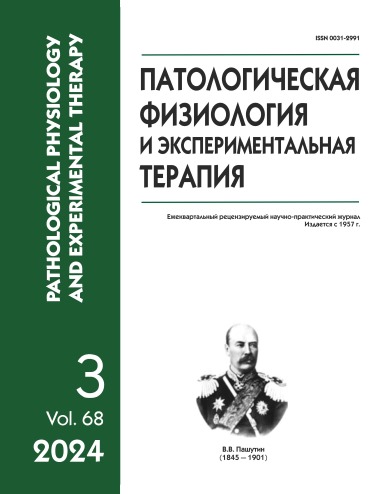Pathomorphological assessment of nonspecific toxic effect of hybrid organotin compounds in metronomic mode of administration
DOI:
https://doi.org/10.25557/0031-2991.2024.03.54-67Keywords:
organometallic compounds, organotin compounds, preclinical studies, morphological research methods, nonspecific toxicity, metronomic administration regimen.Abstract
Introduction. The effectiveness of standard antitumor therapy regimens is questioned due to lack of absolute specificity to tumor cells, the development of drug resistance, and severe side effects that are especially pronounced in patients with III and IV stages of malignant neoplasms. Metronomic administration of antitumor drugs can be successfully applied in palliative chemotherapy. Most research in the field of experimental chemotherapy focuses on the search for new agents, their combinations, doses, and administration modes that maximize the effect on tumor cells with minimal systemic toxicity. The aim of this study was to morphologically assess the nonspecific toxicity of the compounds with an alleged antitumor effect, bis–(3,5-di-tert-butyl-4-hydroxyphenyl) dimethyltin (Me-3) and (3,5-di-tert-butyl-4-hydroxyphenyl) triphenyltin (Me-5), when administered metronomically. Methods. The study was performed on 8-week-old female C57Bl/6 mice weighing 21-22 g. Hybrid organotin compounds (Me-3 and Me-5) were administered metronomically for 10 days at a total dose of 375 mg/kg and 250 mg/kg, respectively. Control animals were injected with the carrier solution (1% gelatin solution). The tested compounds were administered intraperitoneally once a day. Guillotine euthanasia was performed 8 days after administration. The heart, liver, and kidneys were isolated for morphological study. Microscopic examination and photographic recording of histological sections was carried out at 20X magnification using a LEICA DM 4000 B light microscope. The presence or absence of dystrophic or inflammatory alterations and compensatory adaptive reactions was recorded. Results. When administered metronomically, the effect of Me-3 and Me-5 compounds with an alleged antitumor effect did not produce significant, irreversible morphological changes in vital organs. This makes it advisable to further develop hybrid organotin compounds as chemotherapeutic agents for palliative therapy of malignant neoplasms in in vivo models.Downloads
Published
2024-10-08
Issue
Section
Original research
How to Cite
[1]
2024. Pathomorphological assessment of nonspecific toxic effect of hybrid organotin compounds in metronomic mode of administration. Patologicheskaya Fiziologiya i Eksperimental’naya Terapiya (Pathological physiology and experimental therapy). 68, 3 (Oct. 2024), 54–67. DOI:https://doi.org/10.25557/0031-2991.2024.03.54-67.






